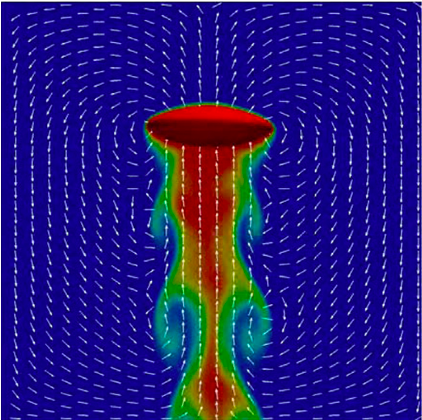Project: Bubble simulation with latent variable models
Description
--update--: This project is now taken byTijs Teulings
The topic of the project is simulation of bubbles with deep generative models. Bubbles are a fascinating phenomenon in multiphase flow, and they play an important role in chemical, industrial processes. Bubbles can be simulated well with a first-principle physics simulator based on the front-tracking technique (Figure 1). However, it is computationally expensive and not scalable to desired dimensions.

Figure 1. Bubble simulation
Towards this goal of this project a previous MSc project of Daan Boer has made outstanding progress. He developed an autoregressive model that can produce bubble surface evolutions and trajectories with high accuracy over long number of iterations. His work is fully detailed in his thesis <link>.
One of the limitations of the current approach is that it does not model the distribution over many possible trajectories. In this project we aim to extend this work to a model that can capture the bifurcations of the bubble trajectories while maintaining the efficiency of sampling of these trajectories from the model.
A proposed direction towards this goal is to introduce latent variables in the model that will allow us to model the distribution over the trajectories.
We are also looking into capturing the global properties of the trajectories in the latent space of the model such as the periodic oscillations of the bubble as an object, while the state of the nodes that represent the surface of the bubble would capture local oscillations of the surface.
The project is very well supported from experts with background in fluid dynamics, specifically dr. Ivo Roghair and by Daan Boer that will bring invaluable support both in the physics aspects of the work and in data generation and the code of the current implementation. So, the focus of the Data Science student taking this project is on solving the modelling challenge.
Details
- Supervisor
-
 Vlado Menkovski
Vlado Menkovski